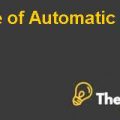Molycorp: Issuing the “Happy Meal” Securities (B) Case Study Analysis
Introduction
The Molycorp case is positioned as the only rare earth mineral manufacturer in the (Western Hemisphere), which is expected to develop a steeply combined supplier of rare earth minerals, oxides, and metals. At the current time the organization facing various fiscal problems, which are described as lower-than-expected incomes and earnings during the second quarter of 2012. At that time organization consider itself in the middle of ($1 billion) principal expansion and they also invented a new funding policy.
In the year 2012, the organization announced that it would issue equity of about ($120 million) and also the convertible debt of ($360 million). Molycorp also comes with a new “share leading agreement” by the name of “Happy Meal” with Morgan Stanley, which helps the organization to allow the issuance of convertible debt. The overall case raises various queries regarding the new funding strategy and its probable impact on the organization's projections and stock price.
Question 1
Implicit Finite Difference Method
The problem at hand is to value a bond using the implicit finite difference method, subject to certain boundary conditions to solve the PDE.
∂F/∂t + (r-y) S∂F/∂S + (r-y) F = 0
In the given necessary parameters, including the par value of the bond, the redemption price, the Rf, the cost of borrowing the stock, the maturity date of the bond, and the current date. It also needs to discretize the PDE using the implicit finite difference method with a time step of Δt = 1/52 (one week) and a stock price step of ΔS = $0.10, using the (CEV model) to improve the stability and accuracy of the solution.
CEV Model
To start, first, calculate the parameters required for the finite difference method. Under the CEV model, simplify it to get V(S) ^2 - 4/ (0.3^2) S^2V(S) + 1 = 0. Solving this equation, results that choose the positive root since V(S) > 0. Based on the results, it is concluded that the bond is not a good deal for the hedge fund at the current price of $1,000. The projected worth of the bond is $984, which is less than the face value of the bond. So, the hedge fund should not invest in the bond at the current price. It presents that the worth of the bond decreases as the stock value decreases, which is expected since the bondholders would lose their investment if the stock price hits zero.
Sensitivity Test
After performing sensitivity tests to check if the S grid contains enough points. To increase the maximum value of S and decrease the spacing between grid points to see if the estimated value of the bond changes. It shows that the estimated value of the bond is not very sensitive to changes in the grid, indicating that the S grid contains enough points. Therefore, it creates confidence in the estimated value of the bond.
Question 2
Bond Value Change
To incorporate the new borrowing rate of y=15%, there is a need to change the “r” term in the PDE to (r - y) Sa - aS. Using the same implicit finite difference method with Δt = 1/52, it help to solve for the bond price on August 20, 2012, with the stock trading at $10.
The bond price is $109.6176. To determine how much the bond's value changes compared to Question 1, there is a need to calculate the value by consuming the % change method in which the long-standing value subtracts from the novel value and then divide it by the old value to get the percentage change. The result presents that the bond's value decreases by (-9.79%) compared to the previous scenario where the borrowing rate was 5%.
Coupon Rate
To determine the coupon rate needed to make the bonds worth their face value, perform a bisection search. It starts with a lower coupon rate of 0% then the middle range (10% and 15%) and an upper coupon rate of 20%. Using the given value and estimated coupon rate to calculate the bond price for each coupon rate using the same method as before and check whether the bond is worth its face value ($100) or not.
If it is, decrease the upper bound to that coupon rate, and if it is not, increase the lower bound to that coupon rate. Repeat this process until converge on a coupon rate that makes the bond worth its face value. Performing this bisection search shows that the coupon rate needed to make the bonds worth their face value is approximately 20%...........
Molycorp Issuing the “Happy Meal” Securities (B) Case Study Analysis
This is just a sample partial case solution. Please place the order on the website to order your own originally done case solution.







